Introduction
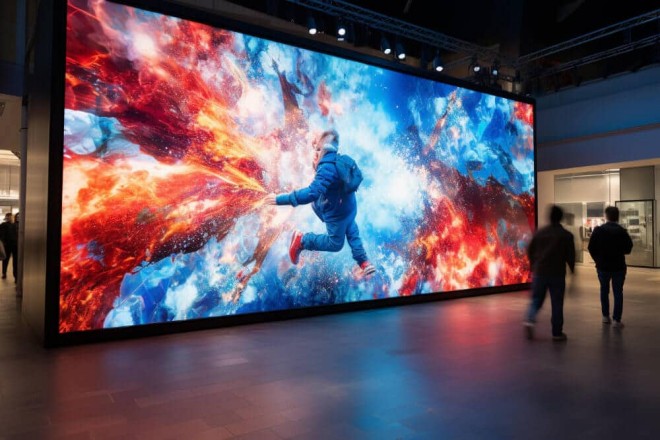
With the advent of the Internet of Everything era, LED display screens are at the forefront of technological innovation. For users who have or are about to purchase Écrans d'affichage LED, it is crucial to understand the future development trends of this technology.
This article will explore how LED display screens will evolve under the background of intelligence and interconnection and how these changes can bring practical benefits to users.
1. Develop an intelligent LED display screen
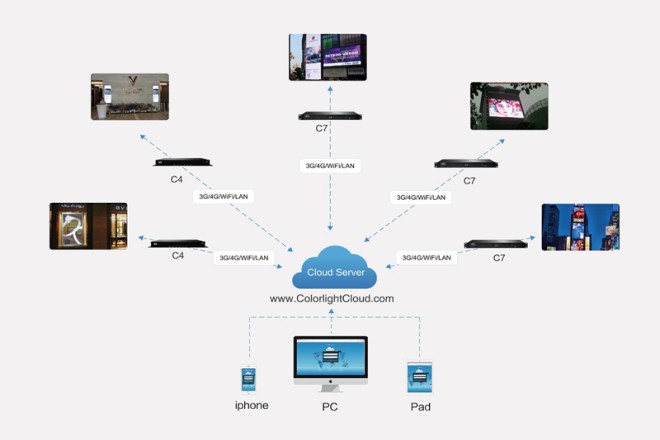
1). Automatically adjust luminosité and save energy
Imagine that when you walk on the street, whether it is sunny or cloudy, the LED billboards on the roadside can automatically adjust their brightness, allowing you to clearly see the information on it at any time, and doing so can save a lot of electricity. This is the magic of smart LED display screens!
The smart LED display screen has a built-in “smart” control system, which, like our eyes, can sense the intensity of the surrounding light. When the sun is strong, it will automatically brighten the screen to ensure that the content is clearly visible, and when night falls, it will automatically dim, which will not affect viewing and can greatly save energy.
Such a design not only makes the LED display screen more environmentally friendly but also reduces operating costs.
2). Interact with you; more fun
The smart LED display can not only automatically adjust the brightness but also interact with you! Yes, you heard it right.
Imagine that you are shopping in a mall and suddenly see an LED display playing an advertisement for a product you are interested in.
What’s more amazing is that you can participate in the interactive games in the advertisement by touching the screen or taking out your mobile phone to scan the QR code and even get coupons or gifts. Isn’t this shopping experience both interesting and practical?
The smart LED display realizes real-time interaction with users through the combination of touch screens, mobile phones, and other smart hardware.
This interaction not only enhances the user’s sense of participation but also makes advertising more accurate and effective. For merchants, this means higher conversion rates and a better brand image.
2. The integration of LED display and the Internet
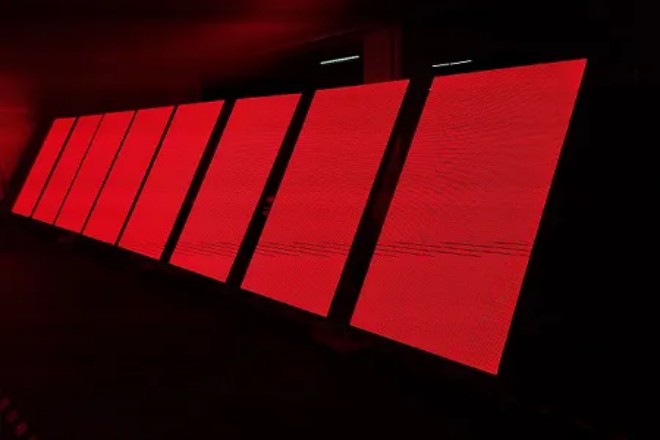
1). Remote control and monitoring: Convenient management across distance
When we talk about the integration of LED displays and the Internet, the first thing that comes to mind is the remote control and monitoring capabilities it brings.
Imagine that you can easily manage LED display screens distributed in different cities and locations while sitting in the office. Isn’t it convenient?
This remote management is achieved thanks to the support of Internet technology. Through the Internet, you can remotely access the management system of the LED display screen like operating a computer.
In this system, you can see the real-time status of each display screen, such as whether it is playing content, whether the brightness is appropriate, and even whether there is any fault.
More importantly, you can also remotely control the display screen. For example, you can change the content played at any time, adjust parameters such as brightness and color, and ensure that the display screen always presents the best effect.
This operation is not only fast but also accurate, which greatly improves management efficiency.
For users with multiple display screens, remote control and monitoring functions are even more indispensable. It allows you to easily manage display screens in multiple locations without having to go to each location in person to operate. This not only saves time, but also reduces management costs.
2). Data integration and analysis: LED display screens become a new window for data visualization
In addition to remote control and monitoring, the integration of LED display screens and the Internet also brings another important function: data integration and analysis.
In modern society, data is everywhere. From environmental monitoring to industrial production, from traffic management to urban management, all fields are generating a lot of data. If these data can be effectively used and analyzed, they can provide us with valuable insights and decision support.
And LED display screens are the ideal tool for these data visualization displays. By connecting to IoT devices, LED displays can receive and display data from various devices in real-time.
For example, in the field of environmental monitoring, LED displays can display environmental data such as air quality, temperature, and humidity; in the field of industrial production, it can display production data such as output, efficiency, and failure rate.
More importantly, these data can not only be displayed in the form of intuitive charts or animations on the LED display, but can also be transmitted to the background management system through the Internet for in-depth analysis.
By mining and analyzing data, we can find the associations and patterns between data, so as to make more informed decisions.
For example, in the field of traffic management, by analyzing traffic flow data, we can predict future traffic conditions and take corresponding measures to alleviate traffic congestion; in the field of urban management, by analyzing urban operation data, we can find the weak links in urban management and propose improvement measures.
3. Improvement of resolution and image quality of LED display
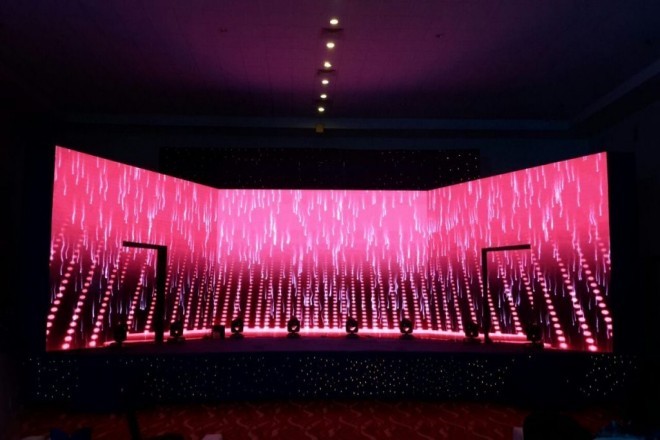
1). Mini/Micro LED technology: Refinement and high-quality revolution of LED display
When we talk about the improvement of resolution and image quality of LED display, Mini/Micro LED technology is undoubtedly an unavoidable topic. These two technologies have jointly promoted the development of LED display towards higher quality and higher resolution in different ways.
- Mini LED technology:
Mini LED, as the name implies, is an LED lamp bead that is smaller than the traditional LED. This technology reduces the size of the LED lamp bead so that more LED lamp beads can be arranged on the same area of the display screen.
In this way, each pixel can be composed of more LED lamp beads, thereby improving the brightness and contrast of the display screen. More importantly, Mini LED technology can achieve more refined local dimming.
That is, according to the different content of the picture, the brightness of each area can be intelligently adjusted, making the dark part deeper and the bright part more dazzling, and the overall picture layering and detail expression are greatly enhanced.
- Micro LED technology:
If Mini LED is a refined upgrade of LED technology, then Micro LED is a revolutionary breakthrough in LED technology. Micro LED technology uses micron-level LED lamp beads, which can be used directly as pixels without the need for additional backlight layers or filters.
Therefore, Micro LED displays can achieve extremely high pixel density and resolution while maintaining extremely low energy consumption and extremely high stability.
In addition, since Micro LED is a self-luminous technology, each pixel can independently control the switch and brightness, so it can achieve more accurate color performance and deeper black performance.
The application of Mini/Micro LED technology has improved LED display screens significantly in terms of resolution, brightness, contrast, color reproduction, etc., bringing users a more realistic, delicate, and shocking visual experience.
2). 4K/8K ultra-high-definition display: A leap forward in the résolution of LED display screens
If Mini/Micro LED technology is the internal driving force for the improvement of LED display screen quality, then 4K/8K ultra-high-definition display is an external demand for promoting the improvement of LED display screen resolution.
- 4K display:
4K resolution, that is, 3840×2160 pixels, is a type of ultra-high-definition video format. Compared with traditional high-definition video, 4K video has higher resolution and richer color information and can present a more delicate and realistic picture effect.
For LED display screens, to achieve a 4K display, it is necessary to have sufficient pixel density and color reproduction capabilities.
This has prompted LED display screen manufacturers to continuously improve their production processes and technical levels to meet the high requirements of 4K video for display screens.
- 8K display:
8K resolution, that is, 7680×4320 pixels, is four times the resolution of 4K and a higher standard for ultra-high-definition video formats. 8K video can present more delicate and realistic picture details, and even the pores and textures of the characters in the picture can be seen.
For LED display screens to achieve 8K display, it is necessary to have extremely high pixel density and color reproduction capabilities as well as high-speed data transmission and processing capabilities. This further promotes innovation and upgrades LED display technology.
The development of 4K/8K ultra-high-definition display has not only promoted the continuous improvement of LED display screen resolution but also promoted the technological progress of LED display screens in color management, image processing, data transmission, etc.
These technological advances enable LED display screens to maintain a high degree of color consistency and picture stability when presenting ultra-high-definition videos, bringing users a more shocking and realistic visual experience.
4. Expansion of the application field of LED display screens
1). Application in emerging markets
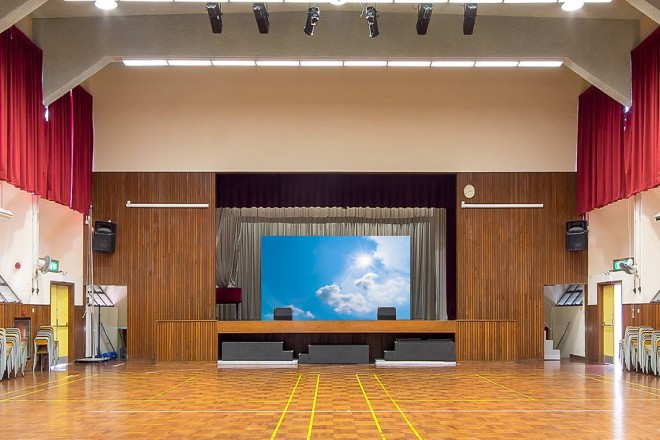
- Éducation field
In the field of education, the application of LED display screens is becoming more and more extensive.
They are not only used in smart interactive classrooms to provide teachers and students with high-definition and vivid visual experience but are also often used for publicity of large screens and campus activity stage backgrounds to enrich campus cultural life.
In addition, LED display screens can also be used in the monitoring and control center of the campus to achieve multi-point monitoring and ensure campus safety.

- Medical field
In the medical field, the application of LED display screens is also eye-catching. They are widely used in hôpital waiting areas, treatment halls, conference rooms, and other places.
The LED screen in the waiting area can play medical knowledge and videos to enhance the patient experience; the LED display screen in the treatment hall is used to display information such as drug prices, departments, and doctors on duty to facilitate patients’ medical treatment.
The LED display screen in the conference room helps medical academic exchange meetings and improves the hospital’s business capabilities.
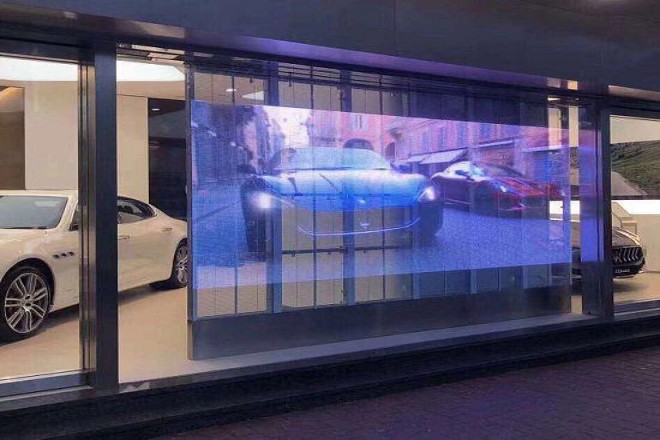
- Automotive field
In automobile 4S stores, LED display screens have become an important marketing tool. They can display the information, prices, configurations, etc., of various models in real-time to help consumers quickly understand the product features.
At the same time, LED display screens can also display the internal configuration, driving mode, sound effects, etc., of the vehicle to enhance consumers’ car buying experience.
In addition, the LED display screens in automobile 4S stores are also often used to promote brand image and enhance brand awareness and reputation.
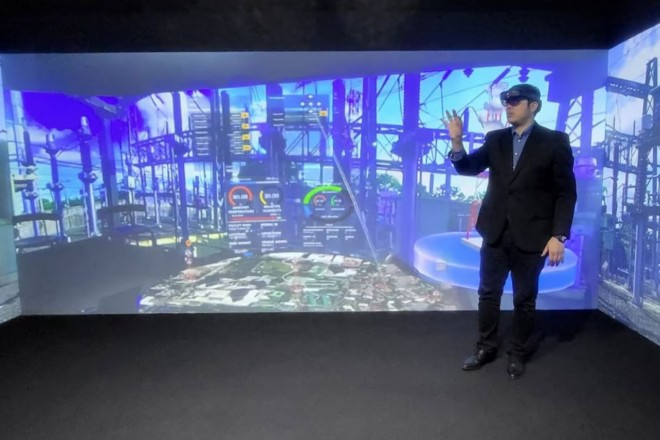
- VR and AR fields
The combination of LED display screens with VR and AR technologies brings users a new visual experience. In the VR field, large LED screens can solve the problems of inconvenience in using traditional VR equipment and individualized images while bringing more display creativity and appeal.
In the AR field, LED display screens can realize the interaction between virtual scenes and characters, providing richer display methods for advertising, film and television, education, and other fields.
2). Integration of the cultural and tourism industry
- The combination of LED display screens and AI
With the rapid development of AI technology, the combination of LED display screens and AI has brought new opportunities to the cultural and tourism industry.
Through AI technology, LED display screens can realize functions such as intelligent advertising push and real-time data analysis to improve the communication effect.
At the same time, AI technology can also automatically adjust and optimize according to the preferences and habits of users to improve user experience.
- The integration of LED display screens and Metaverse
As an emerging digital world, the metaverse provides a new direction for development in the cultural and tourism industry. As the interface between the metaverse and the real world, the LED display screen can present virtual scenes and characters in the metaverse and realize the seamless connection between virtual and reality.
This integration not only brings an immersive experience to users but also provides more innovative application scenarios for the cultural and tourism industry. For example, as a new type of display product, the LED holographic transparent screen can be applied to the curtain wall of buildings to play city propaganda, commercial advertisements, etc., attract the attention of passers-by, and improve the publicity effect.
At the same time, it can also be used as a display tool for commercial windows, displaying goods in the window in the form of holographic images to enhance the grade and texture of goods.
Conclusion
The future of LED display screens is full of infinite possibilities, and its development will profoundly affect the way we live and work. For users, this means smarter, more connected, and more environmentally friendly display solutions.
With the continuous advancement of technology, LED displays will provide users with a richer and more personalized experience and become an indispensable part of the Internet of Everything era.
Enfin, si vous souhaitez en savoir plus sur les écrans LED, veuillez nous contacter.
